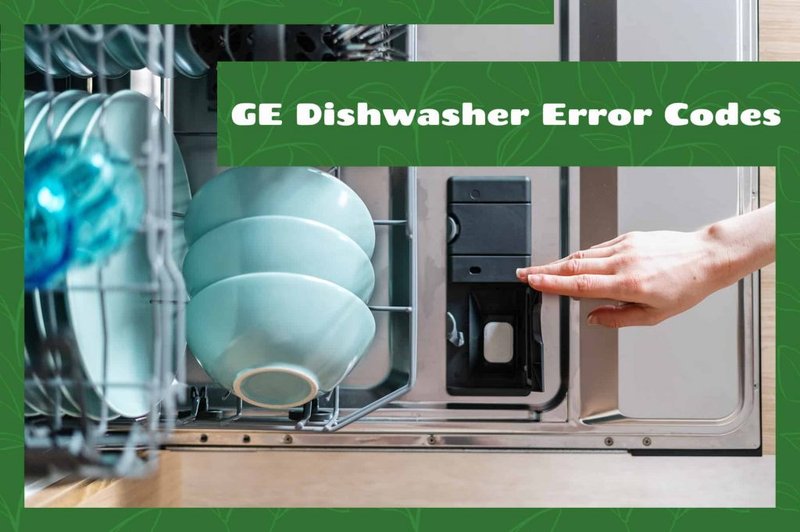
The error code might seem like a complex sequence, but in simple terms, it’s your dishwasher’s way of saying, “Hey, I’m having a bit of trouble heating the water.” This could be due to a few common issues, ranging from a faulty heating element to a problem with the control board that manages the heating cycle. Essentially, it’s like your dishwasher has a sore throat and can’t perform its tasks effectively until it’s warmed up properly. But, here’s the deal, with a bit of guidance, you’ll be able to tackle this problem head-on.
Understanding the Role of the Heating Element
You might be wondering, “What’s so important about the heating element anyway?” Well, think of it like the heart of your dishwasher’s washing cycle. The heating element is responsible for warming the water to just the right temperature. This is crucial because hot water is necessary for effectively breaking down grease and food particles, ensuring your dishes come out sparkling clean. Without it, your dishwasher is like trying to wash dishes in lukewarm water – not very effective, right?
Now, let’s consider an analogy. Imagine trying to dissolve sugar in cold water. It takes forever, doesn’t it? Now, think of hot water as the magic ingredient that speeds up this process. That’s exactly what the heating element does in your dishwasher. It provides the necessary heat to ensure everything dissolves and cleans properly. If the heating element is malfunctioning, your dishwasher can’t perform at its best, leading to half-cleaned dishes and that pesky error code.
If you suspect the heating element is the culprit, you might notice other symptoms, like the dishwasher door being cooler than usual or finding residual food particles on your dishes. These are indicators that the element isn’t heating the water efficiently. Checking the heating element involves inspecting it for visible signs of damage, like breaks or burns. But if you spot any issues, it might be time to call in a professional to prevent further damage.
The Control Board’s Role in Error Code HE
Beyond the heating element, another common cause of Error Code HE is the control board. Think of the control board as the brain of your dishwasher. It sends signals to various components, telling them when to do their jobs. If the control board encounters issues, it’s like having crossed wires in your brain – it can send the wrong signals or none at all, leaving the heating element inactive.
Consider this: if the control board fails to signal the heating element to warm up, your dishwasher is left high and dry, literally. A malfunctioning control board can stem from internal faults, often needing a technical diagnosis. However, sometimes a simple reset can fix minor glitches. Just like restarting your computer can solve random tech issues, giving your dishwasher a reboot might clear up temporary control board troubles.
If resetting doesn’t work and the HE error persists, it could be a deeper issue within the control board itself. At this point, consulting the user manual might offer specific reset instructions or troubleshooting steps. However, replacing or repairing a control board is often a task for a skilled technician.
Wiring & Connections: The Hidden Culprit
Let’s not forget about the unsung heroes (or villains) behind the scenes – the wiring and connections. Just like frayed wires in your favorite headphones can cause static, faulty wiring or loose connections in your dishwasher can lead to the HE error code. These hidden culprits can disrupt the flow of electricity to the heating element, rendering it useless.
Wiring issues might not be visible at first glance, making them tricky to diagnose for a beginner. Checking the wire connections requires turning off power to the dishwasher and safely accessing the wires. Look for any loose, frayed, or burnt wires. Again, if you’re not comfortable with this, it’s always best to get professional help. Tinkering with electrical components can be risky if you’re unsure of what you’re doing.
Now, if you spot any suspicious-looking wires, it might be worth replacing or securing them. Tightening a loose connection can sometimes solve the problem instantly. However, persistent issues with wiring may suggest a bigger problem at play, possibly requiring a more thorough inspection by an appliance repair expert.
Preventative Tips and Solutions
You’ve tackled the immediate problem, but how about preventing it from happening again? Regular maintenance is key to keeping your dishwasher happy and healthy. Make it a habit to run a cleaning cycle every month using a dishwasher cleaner. This helps remove limescale and debris that might interfere with the heating element’s efficiency.
Another tip is to always load your dishwasher according to the manufacturer’s instructions. Overloading can obstruct the heating element and reduce heat distribution, much like stuffing too many clothes into a washing machine and expecting them to come out clean. Give your dishwasher room to breathe and do its job effectively.
If you frequently encounter electrical issues, it might be worth investing in a surge protector. Just like how a surge protector safeguards your computer from power spikes, it can also protect your dishwasher’s control board and other electrical components. Finally, always respond promptly to error codes. Ignoring them can lead to more complicated and costly repairs down the line.
In conclusion, while Error Code HE might seem daunting at first, understanding its common causes and taking preventive measures can go a long way. So, the next time your GE dishwasher raises a red flag, you’ll be equipped with the know-how to tackle it confidently. After all, a little bit of knowledge can transform a potentially stressful situation into a manageable one!